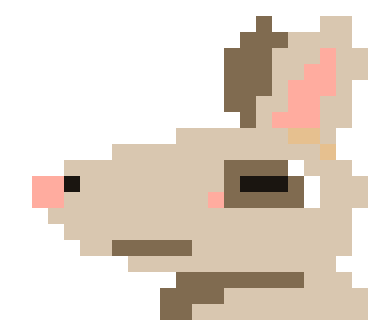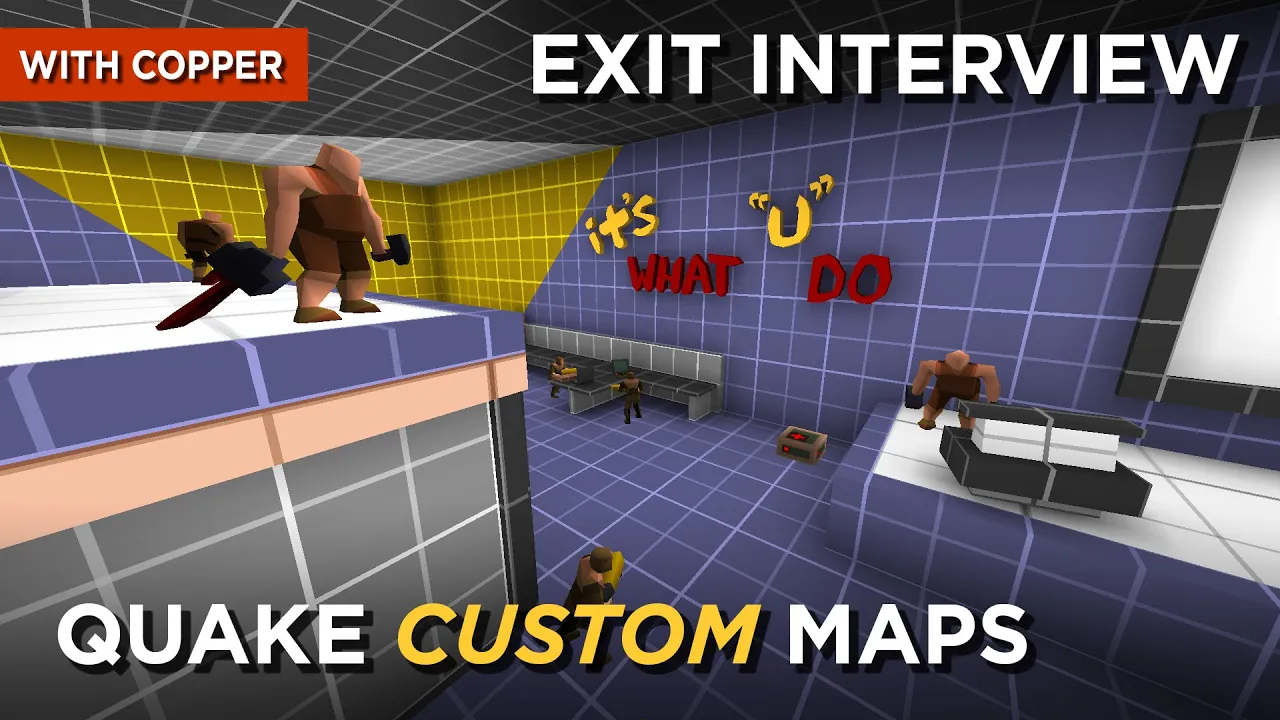Exit Interview - Quake Speed Mapping 220 Prototype Jam 3
When I saw this jam announced in the Quake Mapping discord I knew I had to put something together. Immediately I had visions of lobbies, sofas, and elevators. Months ago goofing around on bass and guitar with a loop station, I recorded an elevator music jam which would be absolutely perfect an office themed level. Track looping, I got to work...
Download and Play
You can download the entire jam including this map on slipseer.com:
The Build
This was a speed mapping jam, and in the spirit of that, I tried to complete the entire map in three calendar days. The jam was (controversially) extended, but I did not use the extra time.
Everything came together sequentially. I started with the first lift and lobby. I spent a while just tweaking and improving the operation of the lift: How long should the ride be? How fast should it appear to be moving? When and how do the doors open? The lifts throughout the building move slow and take significant time. You can hear multiple door open/close sounds during the operation, which give it a feeling of more complex machinery. The scale of the furniture is critical... the first time in-game I rode the elevator, had the doors open, and reveal the perfectly framed sofas, it felt incredible.

Working only with the prototype textures, all some variation of either a specifically sized grid, solid color, simple pattern, etc., gives a great opportunity to create detail through brushwork. I am an absolute freak about this and relish the opportunity to create some goofy low-poly models. The first, and probably the pièce de résistance, was the CRT monitor. It's so elegant in its simplicity... the way the tube casing is offset above the centerline, and how the stand meets main body with a sloped surface creating a slim waist to contrast the bulk of the head and foot. A keyboard is represented with just a slab, whose carefully aligned grid texture draws the separation between the number pad and the main board.

The laptop computer was also a triumph, with its random, non-sensical assortment of keys, somehow giving the impression of a keyboard. What is that white thing on the top right? A pointing device? A special key? It leaves something to the imagination. This model is especially great for decorating as I was able to set the screen hinge in various positions, put laptops on theirs sides in places, etc. With both the laptop and CRT, the style is such that you could imagine this office any time from the 1980s to now.
On the second floor, the idea for the wrap-around bathroom came first. I can't explain why, but I felt like it needed to be there. As with all the other little models, I worked without reference, just drawing and carving out brushes until the most perfect porcelain throne ever to exist in a Quake map revealed itself to me. The linked duplicate grouping system in newer versions of TrenchBroom is great for symmetrical details like this. The toilet has longitudinal symmetry, so simply build half of it roughly, mirror a linked duplicate, and then refine. Every change is automatically performed on both sides, so you don't have to repeat the same operation twice.

Scale is SO hard to get right in Quake. If you look at this toilet next to the player in the map editor, it is swimming pool. When you see it in game, though, it feels just about right. I got extremely lucky with this the first time. All of the little models were the right size the first time and did not require any scale adjustments.
There are four secrets in the level, two each on each of the first two floors. I wanted it to be possible to find them all on your first play through. The somewhat complicated cinematic elevator experience meant that sending the lift back down was not really an option. I came up with the idea of a shaft you could fall down with a portal at the bottom, which would send you back to the previous level. To tempt the player to jump in, a quad damage upgrade is suspended inside, such that you can see it easily from the door but cannot reach it without going past the point of no return. I thought this was very clever, but it proved to be a point of confusion for players, who expected to be met with a swarm of powerful monsters, not the empty halls of the previous floor they had just cleared out.
The optional silver key also proved to be confusing. I wanted to reward the player for exploring, but because the key is likely to be picked up while in combat and without having seen a silver key door, many play testers didn't realize they had even picked up.
Mapping for Quake continues to be such a pleasure. It is a small window into another possible life in which I had pursued art and game development instead of accepting a career in networking software. Maybe it's a glimpse into a future career change? Who could say.


